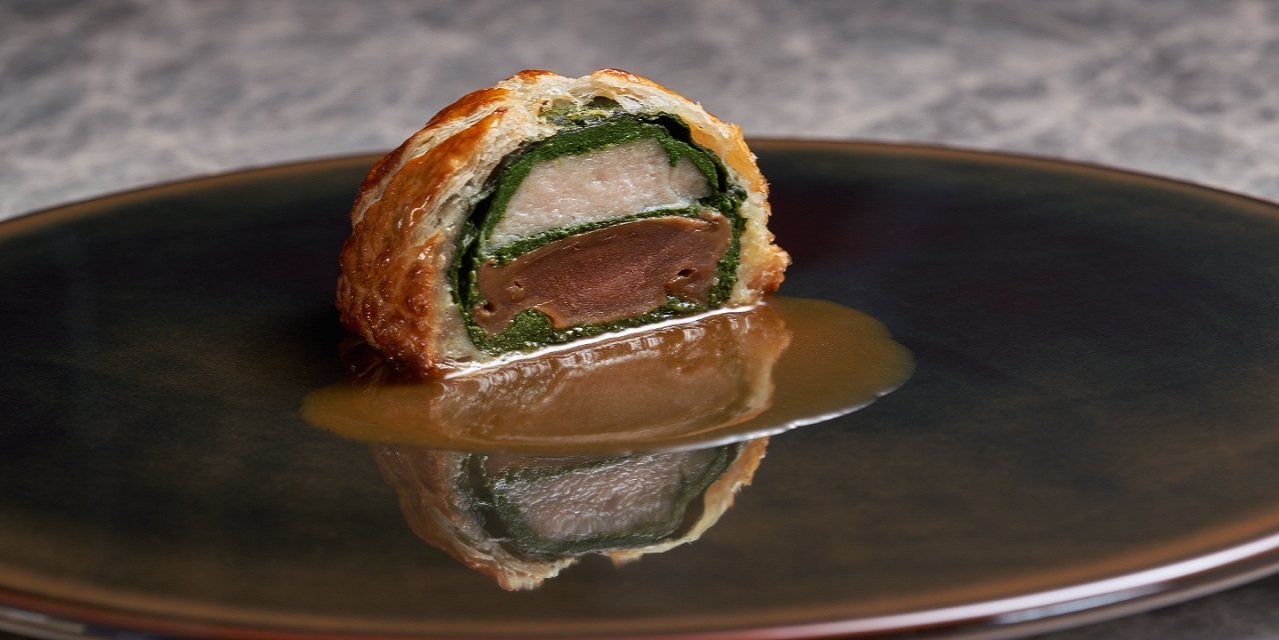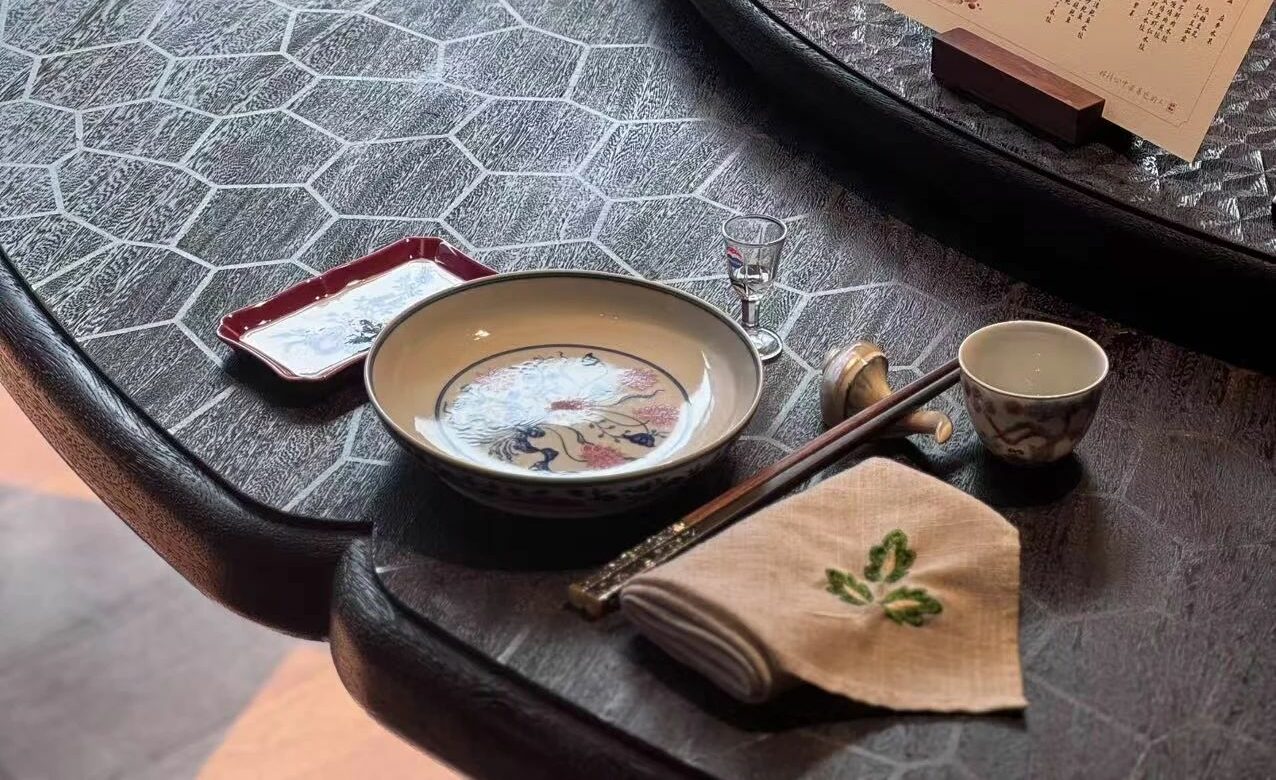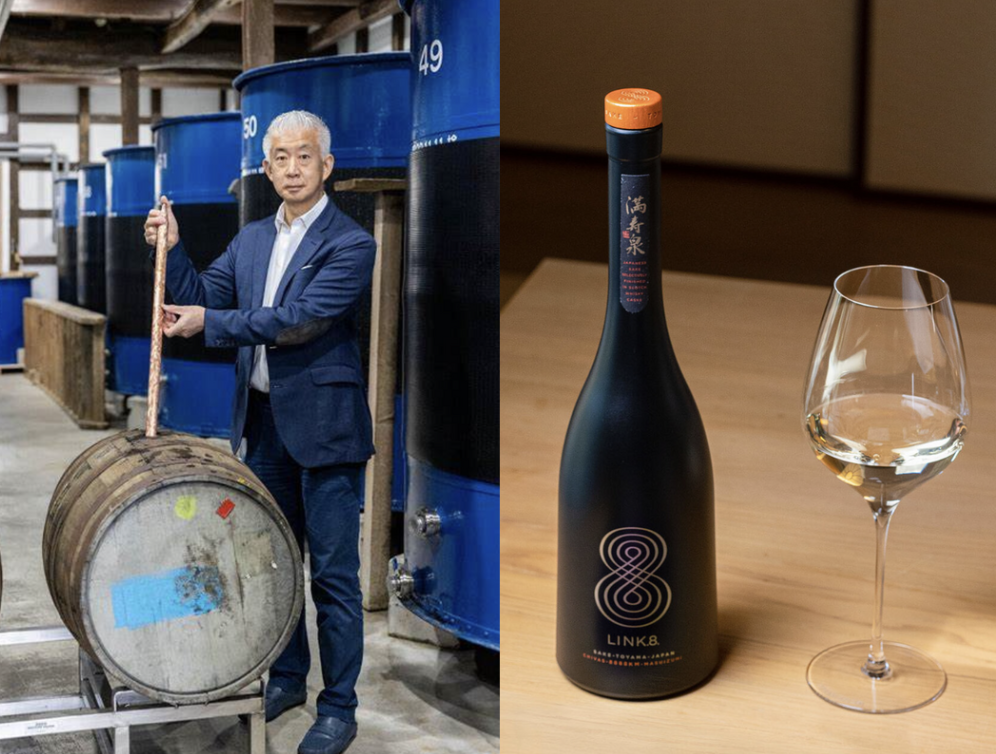I spent some paragraphs writing about the trend of fusion cuisine in one of my column articles a couple of weeks ago, mainly focusing on Chinese restaurants specialising “nouvelle Chinese cuisine”. On the other hand, Western cuisines have taken on new looks as well – a localisation trend of incorporating Chinese ingredients in the dishes. The two seemingly distinct concepts do have some overlapping in this sense.
Localised western cuisine
If you explore the origins of the global wave of localisation in the restaurant industry, you may find the answer lie in the trending neo-Nordic cuisine and its valued proposition of emphasizing local ingredients soon invaded the rest of the world. Thanks to this, people start to think about what local community means to food. In China, you’ve probably seen Italian or French Michelin star chefs start using upmarket Chinese ingredients in their well-presented dishes, good thing for them, but the challenge isn’t trivial.
Imported produce have long been hailed as benchmark ingredients to suffice for high-end cuisine, but now fine dining chefs from abroad have started to incorporate luxurious Chinese ingredients including the likes of abalone, sea cucumber and fish maw into their dishes.This shows their willingness to explore local fare and an appreciating attitude towards rich local culinary cultures.
Asian countries adopt different ways of eating the abalone. Chinese cuisine, more specifically Cantonese cuisine, is used to dried abalones, whereas Korean people prefer the fresh way. The Japanese would usually steam fresh abalones in sake, yet its kippin dried abalones are for sure, highly sought after by diners as well.
The first thing foreign chefs come across when they want to use abalone in the local restaurant, is how well they understand this ingredient and how competent they are in handling it.
To my knowledge, VEA, a Michelin one-starred French restaurant in Hong Kong, was one of the first to use dried abalones in French cuisine, perhaps best demonstrated by Chef Vicky Cheng’s sugar heart abalone pithivier.
I find fresh abalone dishes in most Chinese restaurants hardly likable because not many chefs handle it well enough. Most of the time they are quite bland or utterly unpalatable. But Chef Hiroki at Ostra Shanghai managed to impress me with his sake steamed 2-head fresh abalone flavoured with a special Chinese yellow wine sauce. The abalone was perfect in complexity and had a mature texture, an exceptionally good example for a French approach to fresh abalones.
Korea’s abundance of abalone can be demonstrated by the commonplace of serving abalone dishes in almost all its fine dining restaurants. About two years ago I visited Mingles in Seoul, a Michelin two-starred French restaurant that cuts fresh abalones in thin slices. The soft-chewy texture of the abalone slices complimented the slightly fermented cabbages. A mesmerising, unforgettable experience with light flavouring and delicate presentation.
In addition to abalone, French/Italian chefs are loyal fans of sea cucumber and fish maw, which are favourable ingredients in high-end Chinese restaurants. Corey Lee, Korean chef at Benu, a Michelin three-starred restaurant in California, also loves using sea cucumber. The Michelin two-starred Italian restaurant Da Vittorio in Shanghai currently uses fish maw in its pastas, and the one-starred French restaurant Maison Lameloise Shanghai adapts sea cucumber in a rich stew with Burgundy red wine. Shenzhen’s Ensue is also worth mentioning.
Vicky Cheng – first chef to use dried abalones in French cuisine

Vicky Cheng, the chef of VEA, a Michelin one starred restaurant in Hong Kong
VEA’s signature dish, Abalone Pithivier, took Chef Vicky Cheng about eight months to develop the first version. A second version is now available for diners.
Inspired from a French classic, the Pithivier, Vicky has taken this dish to add a Chinese twist by wrapping up a 27-head Japanese Oma abalone inside the house-made puff pastry. Braised in traditional way, the abalone is topped off with beef sweetbread and silky spinach mousse. Flavouring with braised abalone juice is a typical Chinese way of cooking abalone dishes. I was lucky to have tried the first version of this dish. I’d make a daft to Hong Kong right away just by listening to the description above.


Pithivier Above:beef sweetbread | spinach mousse | dried abalone Bottom:foie gras | morchella | dried abalone
Vicky said that he started out researching dried abalones through buying, screening and experimenting for the first six months. He hoped that knowledge of abalone can be of help for him to make the right decision on choosing the suitable size and type.
There are mainly three types of dried abalone, each different from the other. Having found a quality supplier, Vicky was able to source well preserved dried abalones before he developed different methods of cooking, soaking and storing the abalone for a French presentation.
Vicky said he had spent the first six months learning how to “prepare” and “cook” the abalone, and another two months determining which kind of dried abalone was acceptable in Chinese cuisine, before he finally changed it into what he likes to call “VEA dish”, which means using Chinese ingredients and making them French.
I asked Vicky if tackling dried producein Hong Kong was an advantage for him. “Yes, absolutely. No one ever thought of using dried seafood in Western cuisine five years ago, especially in Hong Kong,”he replied, “high-end dried seafood initially appeared in Chinese restaurants, but not in any Western restaurants.”
Through leveraging on this advantage, Vicky hopes VEA can be all about Hong Kong, but sort of projected in a vision that’s never been done. Using local pork/tomato/eggplants on the menu was something that has been done and perhaps VEA does it naturally and it was in a way too easy for this to be considered. Vicky hopes to offer his guest with things that represent Hong Kong, and that could be a piece of music, food or dried seafood which were previously Chinese restaurant’s exclusivity.
“And that all started with one piece of dried sea cucumber.”

For the signature dish, Vicky sources the sea cucumber from Hokkaido, Japan, and applies a unique roasting technique for an outer crunch whilst the inside is stuffed with a mousseline of Alaskan King crab.
It ticked all the boxes to be used in a fine-dining Chinese x French restaurant, where high-end Chinese ingredients are used to generate wide implications for topics to come.
Linguine all’Amatripesce – where tradition meets creation, land kisses the sea
Chef Stefano Bacchelli at the Michelin two-starred Italian restaurant Da Vittorio uses fish maw in his highly praised linguine dish, adding natural sweetness and gelatinous consistency.
Stefano told me that Da Vittorio in Italy has a dish features cod tripe – Linguine all’Amatripesce. For some time, he’d been searching an ingredient to replace the cod tripe, until he finally made acquaintance with a fish maw dish in a Chinese restaurant. He was struck with the similarities between the two.
Stefano Bacchelli, the chef of Da Vittorio, a Michelin two-starred restaurant in Shanghai
When Stefano Bacchelli first came to China two years ago, he wanted to recreate this dish. “In Italy, we use fresh cod tripe,” said Stefano.
The first year wasn’t fruitful in terms of finding suitable cod tripe for his dish, which was disappointing, but he put hope in the future. Having tried many Chinese and Japanese restaurants in Shanghai, he was surprised to finally meet fish maw. He said, “I can’t say fish maw is similar to the cod fish tripe. But they both contain high-viscosity gel protein.”
“I have a good chef friend whose name is Sassa and he is Japanese. He taught me how to prepare the ingredients because you know it’s dried, and I’m glad that I recreated Amatripesce recipe with fish maw. It turned out amazing.”
Da Vittorio selects ten-year fish maw taken from yellow croakers off the pristine waters of Fujian province. “When I ate a few times this product, I had this in my mind. Wow, this one, this product is the product I’ve been missing out… So at that moment, I realised that I should start using local ingredients adored by locals.”



Linguine pasta “Amatripesce”, fish maw and pil pil sauce
“We live in a world where it’s almost impossible to define a cuisine as purely Italian or any other country or region. Cuisines around the world influence each other, and we can try different ingredients and different cooking methods.” Stefano said.
Incorporating Chinese ingredients in Western cuisine is a way of honouring tradition and showing due respect for local communities. The bonus is that it also raises the elder generation’s acceptance of Western cuisine. One question lies ahead though, because different countries approach Chinese ingredients differently, which one gets the bigger saying may be something thought provoking.
Chinese dried sea cucumber and Tête de veau
Yann Klein first arrived in China in 2015. He was dining with Éric Pras, the Michelin three-starred chef at a Chinese restaurant, when he had his first try of sea cucumber. The two instantly reached consensus that the sea cucumber they ate was very similar to what they previously had in France – Tête de veau. Éric suggested Yann that he could replace the veal with sea cucumber.

Yann Klei, the chef of Maison Lameloise, a Michelin one starred restaurant in Shanghai
The level of acceptance for this ingredient differs vastly among chefs. There was this Michelin three-starred French chef complained to me that he couldn’t understand people’s obsession with sea cucumber. I would like to think that’s something personal, quite decided by cultural and geographic backgrounds. Some people in Spain only eat sea cucumber intestines, whereas Chinese people eat everything from sea cucumber other than its intestines.
In France, Tête de veau can be consumed with or without bones. Deboned veal is immersed in boiling water, rolledand tied with a thin thread. In 2018, when Éric opened Maison Lameloise in Shanghai, he ordered some dried sea cucumbers to run a few tests based on red wine and beef stew recipe which was put forward by him in Burgundy. Later on, they spent a year and a half to reinvent the recipe.
Dried ingredients are a new challenge for western chefs, including Yann Klein. Yann told me how he learnt to prepare dried sea cucumbers from a Chinese chef working for Zhou Jiahao’s group.
“We started in 2019 to do the first sea cucumber dish. This year we made a little bit of a revolution, where we added a smoking step,” said Yann.
The sea cucumber is stuffed with duck and foie gras, then roasted with butter, thyme and garlic. Flamed with marc de bourgogne (burgundy spirit) and braised with red wine and duck juice, it is smoked with wine shoots once fully cooked.


Sea cucumber like a “Bourguignon” stuffed with duck and foie gras | braised in red wine and smocked garnish of a burgundy stew
It is served with the garnish of a burgundy stew: a piece of caramelized pork belly, carrots ball, roasted mushroom, caramelized onions and hash browns. The pairing sauce is a reduction of the cooking juice. Sounds delicious? This beauty is only served in winter.
Western food in China – what’s different and new
Even though the use of local ingredients is more of a creative expression for Western chefs, creative ideas won’t just pop up from a vacuum. Apart from solid techniques, I think a most effective way for Western chefs to understand the subtleties of Chinese ingredients is through the sharing of Chinese chefs. Experience makes a man perfect.
Chinese chefs are not used to sharing their recipes and cooking techniques, at least not like western chefs. This is not their culture, and one of the reasons why it is so difficult for Western chefs to learn Chinese cuisine.
In Hong Kong, Vicky Cheng is a bit luckier as he had experience training under master abalone chef, and thanks to this he managed to bring his abalone dish to the level of its Chinese counterparts.
Vicky described himself as proudful when he saw more Western chefs/Western food exploring Chinese ingredients. VEA started using dried sea cucumbers five years ago, and gradually expanding to fish maw, dried abalones and bird’s nest, but these ingredients were, if there were any, largely absent from Western menus in most parts of the world.


Vicky continues to awe guests with re-interpretations of ingredients that one would never encounter in European-style fine dining menus. He takes special pride in a dish based on Fish Maw (fish bladders), an ingredient indigenous to Cantonese cuisine. The dish features fish maw from both salt water and fresh water breeds, showcasing a palatable difference between the two in both taste and texture. To finish the course, Sauce béchamel thickened from the natural collagen from fish maw will be added to a pot filled with puffed quinoa, fresh-cut chives, and prestigious Chinese beluga caviar.
“I’m glad to know that other Western chefs are exploring it. That’s what I was hoping for when I first started using these products, and I do wish more chefs would introduce these ingredients and the food doesn’t just mean caviar, truffles and foie gras. The possibilities are endless and more.” said Vicky.
Handling the finest Chinese ingredients is a lifelong ambition for some Chinese chefs. Some even dedicate their whole life perfecting abalone dishes, which might be considered as just a random dish in Western cuisine. Mastering abalone cooking requires time and effort and meticulous handling from Western chefs, so the pressure on them to take on luxurious Chinese ingredients cannot be underestimated.
In addition, veering toward local ingredients frees Western chefs from only seasonal menus and occupies a lower environmental footprint generated by international deliveries. Also, it helps with broadening the limited range of sometimes less-used fine dining ingredients.After all, cooking is always evolutionary, and tradition does not remain unchanged.
As these fine dining chefs are willing to challenge themselves against top-notch Chinese ingredients with their refined skills and talent, we might as well open our mind and show appreciation so that new looks of Western food can shine through in this foreign land.
Written by: Jocelyn Chen











